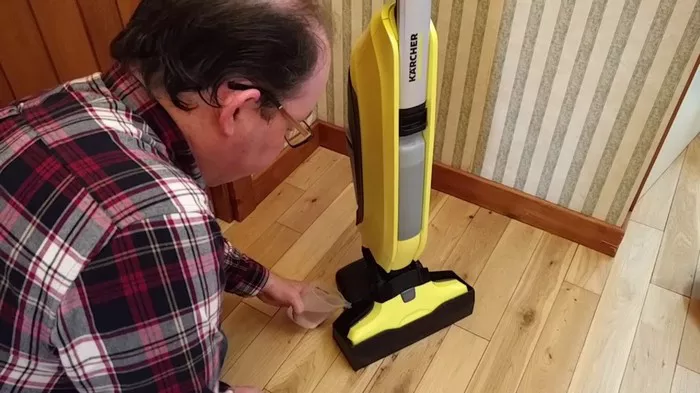Have you ever experienced the frustration of mopping your floors only to find that they smell worse afterward? Despite your efforts to keep your home clean and fresh, an unpleasant odor lingering after mopping can be perplexing and disheartening. Fear not, as this guide aims to delve into the various reasons behind this common issue and provide practical solutions to ensure your floors not only look clean but smell clean too.
Understanding the Culprits
Before diving into solutions, it’s crucial to understand why your floors may emit an unpleasant odor after mopping. Several factors could contribute to this phenomenon, including:
1. Residue Buildup: Over time, cleaning products and dirt can accumulate on your floors, forming a residue that harbors bacteria and produces foul odors.
2. Ineffective Cleaning Products: Some cleaning products may not effectively eliminate odors or could leave behind a residue that exacerbates the problem.
3. Moisture Trapped Underneath: If excess moisture becomes trapped underneath the flooring material or in grout lines, it can create a breeding ground for mold, mildew, and bacteria, leading to unpleasant smells.
4. Dirty Mop or Equipment: Using a dirty mop or cleaning equipment can spread germs and bacteria onto your floors, contributing to odor issues rather than resolving them.
Effective Solutions to Combat Odors
Now that we’ve identified potential causes, let’s explore effective strategies to tackle and prevent unpleasant odors after mopping:
1. Thorough Cleaning Regimen:
Prioritize thorough cleaning of your floors to remove any accumulated dirt and residue. Consider using a multi-step cleaning process, starting with sweeping or vacuuming to remove loose debris before mopping.
Pay special attention to high-traffic areas and spots prone to spills and stains.
2. Choose the Right Cleaning Products:
Opt for cleaning products specifically formulated to eliminate odors and effectively clean different types of flooring materials.
Avoid products containing harsh chemicals that can leave behind residues or cause adverse reactions with flooring materials.
3. Proper Dilution and Application:
Follow the manufacturer’s instructions for diluting cleaning solutions to ensure optimal effectiveness without leaving residues.
Apply cleaning solutions evenly and allow sufficient dwell time for them to penetrate and lift dirt and grime effectively.
4. Ventilation and Drying:
Ensure adequate ventilation during and after mopping to facilitate drying and prevent moisture buildup.
Use fans or open windows to promote air circulation and accelerate the drying process, especially in areas with poor ventilation.
5. Regular Maintenance:
Implement a regular cleaning schedule to prevent dirt and grime buildup, reducing the likelihood of odor issues.
Clean mop heads and equipment after each use to prevent the spread of bacteria and ensure effective cleaning.
6. Deep Cleaning and Maintenance:
Periodically deep clean your floors using methods such as steam cleaning or professional cleaning services to remove embedded dirt, bacteria, and odors.
Seal grout lines and cracks to prevent moisture penetration and inhibit the growth of mold and mildew.
7. Natural Remedies:
Consider using natural remedies such as vinegar, baking soda, or essential oils to neutralize odors and enhance the cleaning power of your solutions.
Experiment with homemade cleaning solutions to find combinations that work best for your specific flooring type and odor concerns.
Preventive Measures for Long-Term Odor Control
In addition to addressing immediate odor issues, incorporating preventive measures into your cleaning routine can help maintain a fresh and odor-free environment:
1. Prompt Spill Cleanup:
Immediately clean up spills and accidents to prevent liquids from seeping into flooring materials and causing lingering odors.
Use absorbent materials such as paper towels or cloths to blot up spills before mopping the affected area.
2. Regular Grout Maintenance:
Periodically inspect and clean grout lines to remove dirt, mold, and mildew buildup, which can contribute to foul odors.
Apply grout sealant to protect grout from moisture and stains, reducing the risk of odor-causing mold and mildew growth.
3. Matting and Shoe Removal:
Place mats at entry points to trap dirt and moisture from shoes, preventing them from being tracked onto your floors.
Encourage household members and guests to remove their shoes upon entering to minimize the introduction of dirt and odors into your home.
4. Humidity Control:
Maintain optimal indoor humidity levels to prevent excess moisture accumulation, which can lead to mold and mildew growth.
Use dehumidifiers in damp areas such as basements or bathrooms to control humidity and inhibit odor-causing microbial growth.
5. Regular Air Freshening:
Incorporate air fresheners or natural odor-absorbing materials such as activated charcoal or baking soda to maintain a pleasant indoor atmosphere.
Open windows periodically to allow fresh air to circulate and remove stale odors trapped indoors.
Conclusion
By implementing these proactive measures and adopting a comprehensive cleaning regimen, you can effectively combat odors and ensure that your floors not only look immaculate but also exude a refreshing cleanliness that enhances your living space. Remember to tailor your approach to suit the specific needs of your flooring type and lifestyle habits, and don’t hesitate to seek professional assistance for stubborn odor problems or specialized cleaning tasks. With diligence and the right strategies, you can bid farewell to post-mopping odors and enjoy a consistently fresh and inviting home environment.

